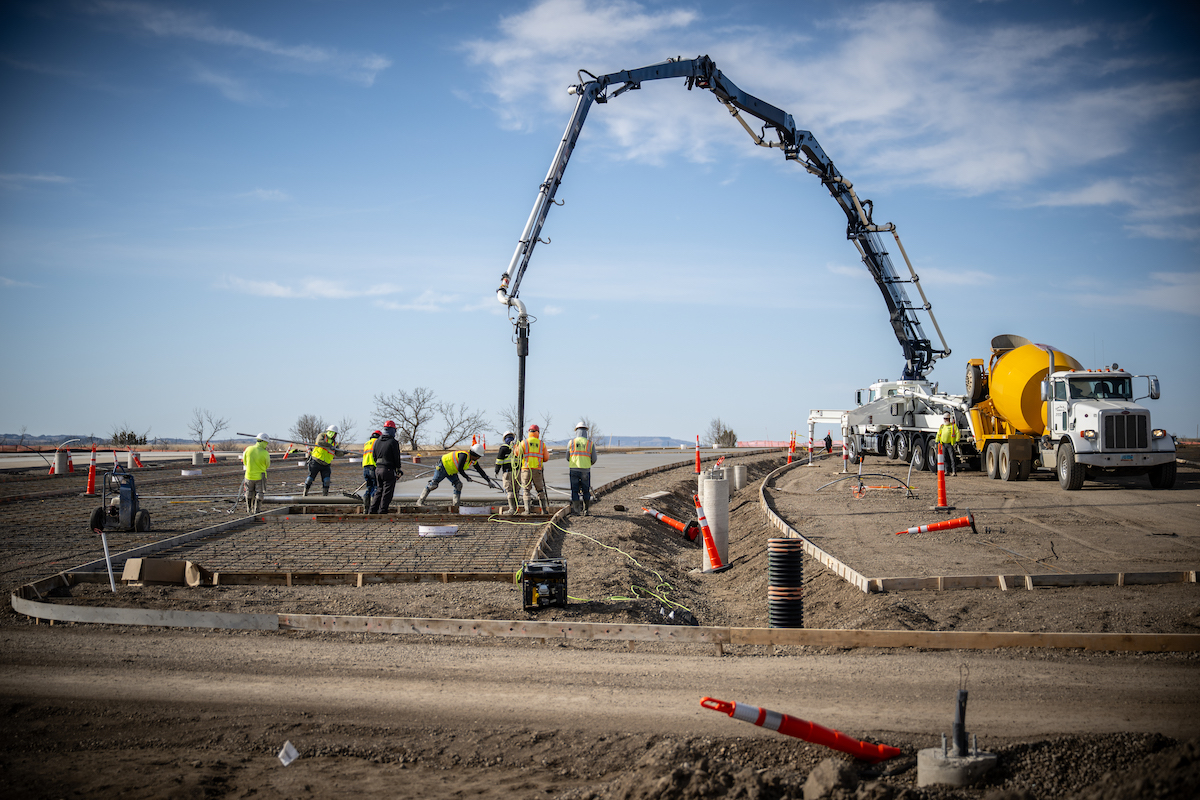The construction began in 2018 to create a safer and longer lasting bridge as well as a safer walkway for pedestrians and shoulders for bicyclists. The contractor for the $39.3-million project is Lunda Construction Co.
The old bridge is a 1,283-foot, six-span steel truss bridge over the Rainy River, consisting of one lane in each direction with a 5.9-foot-wide sidewalk. It was built in 1959 by Barnett-McQueen Ltd. and links Baudette, Minnesota (Highway 72), and Rainy River, Ontario (Highway 11). The new 1,350-foot, five-span continuous haunched steel I-girder bridge has one lane in each direction and a six-foot sidewalk on one side.
"It is the only border crossing for 50 miles in either direction," said Joe McKinnon, MnDOT Project Manager. "This portion of the Rainy River is approximately 1,200 feet wide. It is also a popular fishing spot year-round. Construction has been limited during sturgeon spawning times, and provisions were made during construction to allow for fishing boat traffic safety."
MnDOT partnered with the Ontario Ministry of Transportation to collaborate on the project from design to construction.
Stantec, an engineering services company based in Edmonton, Alberta, produced the preliminary and environmental designs, and the Parsons Transportation Group of Washington, D.C., developed the final bridge design. These efforts were coordinated with 90 stakeholders to address environmental, construction, and border control concerns, as well as historical concerns and the public participation process.

| Your local Komatsu America Corp dealer |
|---|
| Road Machinery and Supplies Company |
"The design is a typical steel-girder and cast-in-place concrete deck," McKinnon said. "The reinforcing steel in the deck is stainless steel as an effort to create a longer lifespan of the deck surface life, before a deck rehabilitation project would need to be done in the future."
Although both countries partnered in this project, there were differences. The historic consideration of the bridge, a rare example of a Pennsylvania truss, made it eligible in the U.S. for listing in the National Register of Historic Places. By law, the state must inform a responsible government or other entity of its availability for preservation and relocation. Otherwise known as, putting it up for sale. However, the U.S. only owns half of the bridge, while Canadian authorities did not consider the bridge as historic.
"Because of its historic designation we had to try and offer the bridge for sale," McKinnon said. "But since ownership of the bridge is split with Canada, we were actually advertising only half of a bridge for sale. The advertising for the chance to buy half of a bridge created a stir online and in the media, but it didn't generate any interested parties due to the considerable costs to disassemble, move, and reassemble."
Demolition of the old bridge is expected to take three to four months, weather permitting. Due to winter shut-down and stream bed restrictions, the removal of the old bridge will continue into summer 2021. Work to be completed summer 2021 includes:
- removal of underwater structures
- paint girders
- install special surface on concrete
- remove dock wall
- turf establishment





































































